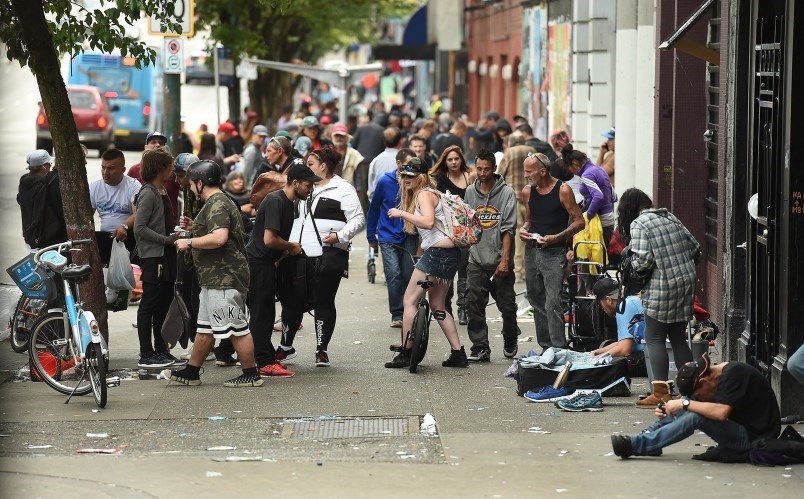A coordinated effort has been launched to prevent the spread of COVID-19 in Vancouver's Downtown Eastside.
Called the DTES Response, the group aims to activate networks in the community to create a stop-gap plan for the most urgent needs of the most vulnerable in our communities. Right now, the group is mobilizing resources and coordinating operations to address the challenges.
The group has created the to raise $100,000 for immediate needs like food, mobile phones, and money for loss of income.
Roughly 15,000 people are at risk in the Downtown Eastside, and 3,000 of them are homeless. What's more, 4,700 people in the DTES live in single-room occupancy hotels (SROs). Under these conditions, self-isolating and social distancing is extremely difficult. SRO tenants share bathrooms and many do not have access to soap, making regular hand washing impossible. SROs do not have kitchens, soup kitchens have shut down, food banks have limited stock, and disruptions in informal economies creates loss of income. Additionally, many SRO tenants donвҖҷt have cell phones, so in self-isolation, they canвҖҷt stay connected, communicate, or get necessary information.
вҖңThe situation is serious and it is urgent. In a neighbourhood where space, food, supplies, and everything is shared, if we have one infection, it could decimate this entire community," says Wendy Pedersen, organizer, DTES SRO Collaborative Society. вҖңLiving conditions are already dire, and this is only going to get worse if we donвҖҷt act now.вҖқ
It will benefit:
- DTES SRO Collaboration (SRO-C),
- Western Aboriginal Harm Reduction Society (WAHRS),
- Friends of CCAP (Carnegie Community Action Project),
- Overdose Prevention Society (OPS)
вҖңWeвҖҷve been seeing community amenities closing,вҖқ said organizer Erica Grant, вҖңand on the weekends, there is no food available.вҖқ
Individuals, foundations, and corporations can help right now by:
- Not visiting the DTES: we are practicing social distancing and want to minimize the risk of introducing COVID-19 to the population.
- Donating money: to purchase food, mobile phones, and to transfer funds to those in need.
Click here for original article.
Мэ



